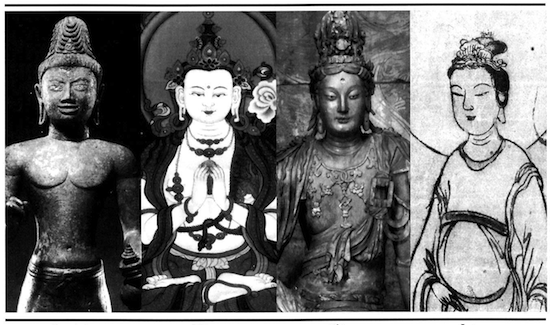
Avalokiteshvara is recognized throughout the Mahayana Buddhist world as the bodhisattva of compassion. Having made the vow not to enter nirvana until all beings have attained enlightment, this bodhisattva remains in samsara in order to answer the cries of suffering—hence the name Avalokiteshvara, “Perceiver of the World’s Sounds.”
In Tibet, Avalokiteshvara’s principal manifestation is Chenrezi, the bodhisattva invoked by reciting the mantra Om Mani Padme Hum. In China, the earliest paintings depict Avalokiteshvara as male, but by the seventh century C.E. he had assumed the willowy, feminine form of Kuan yin. This Chinese form was adopted in Japan, where she is called Kannon of Kanzeon, and is generally depicted as female or androgynous in form.
The bodhisattva Avalokiteshvara embodies the virture of compassion and the means of exercising that compassion in the world. For this reasion, Avalokiteshvara assumes thirty-three diferent forms, one of which, having a thousand arms and hands, is symbolic of the myriad skillful means he/she employs to lead suffering beings to nirvana.
Thank you for subscribing to Tricycle! As a nonprofit, we depend on readers like you to keep Buddhist teachings and practices widely available.